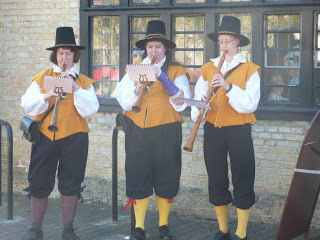Martin Edwards's Blog, page 238
September 20, 2012
Forgotten Book - No Fury
My Forgotten Book for today is No Fury by Francis Beeding, a name which concealed an interesting writing duo who both worked for the League of Nations (and no doubt enjoyed name-checking the League a time or two in this book.) The book first appeared in 1936, and features the rather likeable youngish Inspector Martin, who starred in the earlier, and excellent, The Norwich Victims.
Like the earlier book, this one starts with the inclusion of several photographs, although this time, they are not quite as crucial or as cleverly integrated with the story as a whole. That story opens with a popular novelist, Valerie Beauchamp, who proves to be a very unpleasant individual, corresponding with a secret admirer. But it turns out that she is the victim of a rather cruel hoax perpetrated by a group of "friends".
Soon Valerie is found battered to death and so disfigured that she can only be identified by her dental records. The murderer is not found, but soon the hoaxers start to be murdered, one by one. The pace is fast, and Beeding uses multiple viewpoints very effectively, not least in a pretty good court scene which ends with a hung jury.
I found this novel entertaining and very readable. There were, however, a couple of major flaws which meant that it falls well short of being the classic it might have been. I can't say more without really spoiling the story, as the flaws concern the otherwise ingenious twist in the tale. But Beeding, who mainly wrote thrillers, had the knack of pacing a story well, and in comparison with many Golden Age mysteries, this one zips along so well that the failings were pretty well compensated for. Worth looking out for, but not easy to find, and not as good as The Norwich Victims.. [image error]
Like the earlier book, this one starts with the inclusion of several photographs, although this time, they are not quite as crucial or as cleverly integrated with the story as a whole. That story opens with a popular novelist, Valerie Beauchamp, who proves to be a very unpleasant individual, corresponding with a secret admirer. But it turns out that she is the victim of a rather cruel hoax perpetrated by a group of "friends".
Soon Valerie is found battered to death and so disfigured that she can only be identified by her dental records. The murderer is not found, but soon the hoaxers start to be murdered, one by one. The pace is fast, and Beeding uses multiple viewpoints very effectively, not least in a pretty good court scene which ends with a hung jury.
I found this novel entertaining and very readable. There were, however, a couple of major flaws which meant that it falls well short of being the classic it might have been. I can't say more without really spoiling the story, as the flaws concern the otherwise ingenious twist in the tale. But Beeding, who mainly wrote thrillers, had the knack of pacing a story well, and in comparison with many Golden Age mysteries, this one zips along so well that the failings were pretty well compensated for. Worth looking out for, but not easy to find, and not as good as The Norwich Victims.. [image error]
Published on September 20, 2012 16:30
September 19, 2012
The Devotion of Suspect X
There is huge enthusiasm for crime fiction, past and present, in Japan, as I know well from a couple of Japanese friends – one a Reg Hill addict, another extremely keen on collecting obscure Golden Age fiction. I haven’t, though, read many crime novels written by Japanese authors and I decided to start putting this right with a recent smash hit, The Devotion of Suspect X, by Keigo Higashino.
The cover of my paperback edition carries a quote calling Higashino “the Japanese Stieg Larsson”, but although this book has sold a couple of million, it has very little in common with Larsson’s books. But that isn’t a criticism – this is a thoughtful book that is very easy to read in a translation by Alexander O.Smith.
The set-up is seemingly simple. An attractive woman, Yasuko, is plagued by her deeply unpleasant ex, and she winds up killing him, with assistance from her young daughter. A disastrous situation, but her neighbour, a quiet mathematician who is obsessed with her, helps her to conceal her crime.The police come sniffing round, and I was rather surprised that they seemed to pay little attention to other suspects, given that the victim was the sort who would make many enemies. But Yasuko’s protector outwits the cops time and again. Unfortunately, he becomes jealous when a new man enters Yasuko’s life...
This is a clever and interesting book, with occasional poignant touches. The cast of characters is small, but the cat and mouse game between the investigators and the mathematician held my interest throughout. I’m not sure it quite lives up to the hype, but that’s usually the way with mega-sellers. But if it isn’t an absolute masterpiece, it’s certainly very good, and I’m happy to recommend it.
[image error]
The cover of my paperback edition carries a quote calling Higashino “the Japanese Stieg Larsson”, but although this book has sold a couple of million, it has very little in common with Larsson’s books. But that isn’t a criticism – this is a thoughtful book that is very easy to read in a translation by Alexander O.Smith.
The set-up is seemingly simple. An attractive woman, Yasuko, is plagued by her deeply unpleasant ex, and she winds up killing him, with assistance from her young daughter. A disastrous situation, but her neighbour, a quiet mathematician who is obsessed with her, helps her to conceal her crime.The police come sniffing round, and I was rather surprised that they seemed to pay little attention to other suspects, given that the victim was the sort who would make many enemies. But Yasuko’s protector outwits the cops time and again. Unfortunately, he becomes jealous when a new man enters Yasuko’s life...
This is a clever and interesting book, with occasional poignant touches. The cast of characters is small, but the cat and mouse game between the investigators and the mathematician held my interest throughout. I’m not sure it quite lives up to the hype, but that’s usually the way with mega-sellers. But if it isn’t an absolute masterpiece, it’s certainly very good, and I’m happy to recommend it.
[image error]
Published on September 19, 2012 02:01
September 16, 2012
Masters of the "Humdrum" Mystery
I’m not sure that there’s any non-fiction book in recent times whose arrival I’ve awaited as eagerly than Curtis Evans’ new study of three Golden Age detective novelists. Curt is someone I’ve mentioned several times on this blog, and he’s also posted a number of insightful comments here.. One thing is for sure: there are very few people around today who have read as widely in the Golden Age as Curt.His knowledge of his subject matter is evident throughout his book. Its title is Masters of the “Humdrum” Mystery: - the sub-title, Cecil John Charles Street, Freeman Wills Crofts, Alfred Walter Stewart and the British Detective Novel, 1920-1961, Neither title nor sub-title may set your pulse racing if you're not already a fan of Golden Age mysteries. But I’m very firmly of the view that anyone who is fascinated by Golden Age fiction and criticism will find this volume full of interesting material.
There are two main reasons why the book is so valuable. First, Curt’s research has been extremely thorough. He’s uncovered facts about the lives of the three writers he features (Street, by the way, is better known as John Rhode and Miles Burton, while Stewart’s pen-name was J.J. Connington) which have not emerged in any previous reference book. And knowing more about the lives of writers does sometimes give us a better understanding of their books.
Second, Curt’s judgments are invariably thoughtful and reasoned. Over the past two or three years his writing about obscure books has made me aware of, and encouraged me to track down, some hidden gems that I wouldn't otherwise have encountered. A feature of his opinions is that he is no slave to fashion, and I find something truly refreshing about that. For instance, I have found more of merit in reading John Rhode since considering Curt's advocacy on Rhode's behalf than I ever did before.
Naturally, because we all have our own views on Golden Age fiction, some readers will have a different perspective on the merits of Rhode, Crofts and Connington .Curt often takes Julian Symons to task for downplaying the merits of the writers he labelled as “humdrums”, and although Symons is the crime critic I most admire, I would agree that he was sometimes a bit harsh on them - above all on Henry Wade, who isn't really humdrum at all.
My feeling is that, actually, Symons would have enjoyed and appreciated this particular book. I say this even though there are many judgments made in it which he would surely have disputed. But Symons was self-confident and sensible enough to be receptive to “reasoned contradiction”, which is one of the key reasons why he is a critic of such enduring importance. (It’s notable how many times he is referenced in the index to this book.) Any of us who venture to express our opinions on books are bound to face contradiction from time to time, but as long as the disagreement is objective and reasoned (and, I would add, courteously expressed), as Symons recognised, it's fair enough.
The authors and novels covered in this study provided a sizeable readership with entertainment for decades, and pleasingly, digital publishing is beginning to enable a new generation of fans to enjoy their work. In addition, this trio made a contribution to our social history, even if that was not what they set out to do. Curtis Evans, by taking their efforts more seriously than most other critics have done, has performed a valuable service to crime fiction criticism and I salute him for it. This is a book to which I will, I'm sure, return again and again.
[image error]
Published on September 16, 2012 16:06
September 14, 2012
Forgotten Book: S.S.Murder
S.S.Murder is the second novel by Q.Patrick which I’ve featured as a Forgotten Book. It first appeared in 1933, and a game of bridge is a significant part of the plot – just as it was a year or two later in Agatha Christie’s Cards on the Table. I’m not a bridge player (in my youth, I once went to evening classes to learn how to play, but retired, utterly defeated, after a few weeks). Fortunately, my lack of knowledge didn’t interfere with my enjoyment.
This is a more orthodox detective novel than that superb Q. Patrick book The Grindle Nightmare, and lighter in tone. The story is told through entries in a private journal made by a young woman journalist for the entertainment of her future husband. She is on board a luxury liner, taking a long trip to South America to help in recuperating from illness. But murder intervenes. A wealthy man is poisoned, and before long another person is thrown overboard.
The lively writing is part of the appeal of the book, but inevitably its quality is dependent on the plot. Who is the mysterious “Mr Robinson” who disappears after the first crime? I cherished the hope that, since that was the name used by Crippen when he fled across the Atlantic, there might be some link with the Crippen case. Sadly, it was not to be.
The puzzle is, however, suitably elaborate, and Patrick takes great care to play fair, and offer a range of clues. I guessed part of the solution, but not all of it. Nicely done, I thought. I also rather liked the way he referred to himself in passing – even including a plug for one of his other books! Cleverer than the much-debated modern use, by some, of "sock puppets", that's for sure. This novel is well worth a read, if you like classic whodunits.
[image error]
Published on September 14, 2012 03:00
September 12, 2012
New Books
Today I’d like to highlight a range of newly published books, one by a good friend, and a couple by relative newcomers whom I’ve never met. What they all have in common is readability.
Smoke Alarm, by the consistent (and consistently under-estimated) Priscilla Masters, is the fourth entry in her series featuring Shrewsbury-based coroner Martha Gunn. Once again, it benefits from a setting in Shropshire, a county Cilla knows just as well as Ellis Peters did. The mystery revolves around a fire, the work of an arsonist, that results in three deaths. As the author explains in an afterword, a real-life tragedy provided the seed for the narrative, but the story itself is very much a work of fiction.
Devoured, by D.E. Meredith, is interesting on two levels. First, the story – set in Victorian London and the era when forensic science began to develop – has a number of appealing features and is clearly the product of extensive research. Professor Hatton is asked for help by Inspector Adams of Scotland Yard when the body of Lady Bessingham, a noted collector at a time when specimen-hunting is all the rage, is found in her home in Nightingale Walk – surrounded by fossils and tribal masks. A creepily memorable crime scene.
Second, I’d like to highlight Allison and Busby's presentation of this hardback edition. The binding, with a map of Victorian London, is attractive, and I suspect this book is a good example of the way forward for hardback fiction in the era of the ebook. Ebooks pose, as we all know, a threat to conventional books, but I don’t believe for one moment that the book will disappear. Mass market paperbacks may not sell as easily, but there may well be a resurgence of interest in hardback editions that are attractively bound, as lovely things to own. I’ve heard a number of publishers express this view, and I think there’s something in it.
Finally, Baptism by Max Kinnings (Quercus) is a chunky, action-based thriller, and a paperback original. The author is a lecturer in creative writing from Brunel University, and I gather that he wrote a couple of novels a decade or so ago, but this book represents a fresh start. The opening pages supply plentiful ingredients for dramatic action. A monk is murdered in North Wales; a family is held hostage in Wimbledon; a Tube train stands in a tunnel, its passengers trapped and helpless. Thus is the scene set for blind DCI Ed Mallory, the Met’s top hostage negotiator, to take a bow. Kinnings’ storyline, and writing style, are very different from Meredith’s, but they are both very promising writers, and I would like to think they will enjoy careers as long and satisfying as Cilla Masters’.
[image error]
Published on September 12, 2012 02:16
September 10, 2012
Fen Country





East Anglia is the setting for some marvellous crime fiction, but it's a part of England that I've seldom visited. This is quite a confession, given that in the 90s I co-edited, with Robert Church, Anglian Blood, a CWA anthology of East Anglian crime fiction; the local chapter invited me to become involved, not because of my knowledge of the area but because of my interest in short stories. That book boasted a cover that I really did not like, but thankfully, the contents were better than the artwork, and the book contained a couple of stories that were short-listed for CWA Daggers. Suffice to say that I felt that a return trip to Fenland was long overdue.
So, on a September Sunday as lovely as any we've had all year, my webmaster and I headed from Cambridge to Ely - a place I've never been to before, but of which I've heard good things.In a nutshell, the praise Ely receives from its fans is well-deserved. We had a terrific day, which included a walking tour and a trip to the top of the remarkable octagonal tower of the utterly stunning cathedral.
I suppose the most famous East Anglian detective novel is Sayers' The Nine Tailors, which most people would acknowledge is a classic of the genre (though after re-reading most of her work earlier this year, I decided I preferred the very appealing Murder Must Advertise.) She captures the atmosphere of the Fens very effectively. P.D. James also loves the area, and Devices and Desires in particular benefits from an evocative setting.
The late Alan Hunter - who created Inspector George Gently and who, like P.D. James, contributed to Anglian Blood - was another East Anglian crime writer of note. It's sad that his books were not televised until after his death. Among present day practioners, Jim Kelly is especially good at Fenland settings, and I'm a fan of his enjoyable puzzle Death Wore White. My trip to Ely and Fenland, although very brief, helped me to understand why the landscape has made such a strong impression on writers over so many years. It's a fascinating place, and I shall aim not to leave it too long before exploring it more extensively.
[image error]
Published on September 10, 2012 16:30
Cambridge




After a summer of disappointing weather, a promising forecast was enough to get me off on a trip down the motorway to a truly fascinating city I''ve only once visited in the past, in the long ago days when one of my brothers-in-law was a student there. Cambridge is not the most accessible place from the north west, but on a very sunny week-end, it was utterly charming and beautiful.
Highlights for my son and me included a river tour on a punt (courtesy of a current undergraduate - it's more than thirty years since I lasted punted and I suspect my technique hasn't improved in the intervening years) and a walk round the superb botanical gardens. We found countless attractive corners, and whilst a couple of days isn't enough to see everything - far from it - we packed a lot into the time available.
Cambridge isn't as well represented in crime fiction as Oxford, and, although I've never attempted a count, I'm sure there are, and have been fewer ex- Cambridge students who have written crime than is the case with Oxford. But this is irrelevant, really, because there are plenty of very good Cambridge-based books. Ostara Publishing (masterminded by Richard Reynolds of Heffers) has published a number of them,and this small press is well worth a look.
Perhaps my favourite Cambridge-based crime novel is a historical mystery, The Anatomy of Ghosts, by Andrew Taylor. Andrew is a gifted writer, one of the finest around, and is confident enough in his own skills to develop a story gradually, eschewing synthetic dramatic tricks that "up the stakes", and relying instead on craft and character (as well as a talent for unorthodoxl plotting) to draw his readers in. This is one of his very best books. Among other first-rate writers who use Cambridge as a setting, I'd highlight the talented and under-estimated Michelle Spring. I've not often mentioned Michelle in this blog, but although far from prolific, she is definitely worth of note.
 After Cambridge, we had a fantastic day somewhere else that has occasionally featured in the genre. More of that tomorrow, if time permits....[image error]
After Cambridge, we had a fantastic day somewhere else that has occasionally featured in the genre. More of that tomorrow, if time permits....[image error]
Published on September 10, 2012 01:05
September 7, 2012
Forgotten Book - My Wife, Melissa
More than three years ago, I posted about the original 1960s TV version of Melissa, with a script by Francis Durbridge. Melissa was revived in the Nineties by the estimable Alan Bleasdale, a show I sat down to watched with great optimism when it first aired - but the results were disappointing. (Interesting - Bleasdale's literary talents seem to me to be, unarguably, superior, but when it comes to a dazzlingly intricate thriller, give me Durbridge any day. It takes a particular talent to spring constant surprises in the way he does, and to - more or less! - make sense of it all at the end.) Now, at long last, I’ve caught up with the Durbridge novel My Wife, Melissa.
For this, I have to thank Bello, who provided me with a review copy to read on my iPad – and Durbridge’s style is so smooth and easy to read that I found this an ideal book to devour on screen rather than in print form. Bello have made quite a number of Durbridge’s non-Paul Temple titles available, and they make ideal holiday fare, entertaining without being too taxing.
The story-line is classic Durbridge, narrated in the first person by an amiable ex-journalist who has been trying to establish himself as a novelist. His marriage to the glamorous Melissa has hit a rocky patch, though, and after she goes out to a party with friends, he receives a phone call from her, summoning him to meet someone who may be able to help him with his career. But Melissa has been strangled – and she was dead before the phone call was made...
The twists come thick and fast, and the serial nature of the source screenplay is apparent from the abundance of cliff-hangers. Characterisation was not Durbridge’s strength, and we don’t really care about any of the suspects, or even the luckless Melissa, just as we don’t stop to think about the unlikelihood of most of the plot developments. Durbridge’s ability to sweep his readers along so that these flaws don’t really matter is enviable. This isn’t War and Peace, but it was never meant to be. Great fun.
[image error]
Published on September 07, 2012 01:47
September 6, 2012
A Mother's Son
A Mother's Son is a two-part crime drama screened earlier this week, and I've just caught up with it. I saw a newspaper preview which likened it to Hitchcock's film Suspicion (based on, but not as good or as dark as, Before the Fact by Francis Iles) and thought I ought to take a look at it. But interested as I was, I didn't expect such excellence. It really was gripping.
The setting - evocatively photographed - is East Anglia. The attractive but brittle Hermione Norris has recently married Martin Clunes, an affluent solicitor, after divorcing the rather less affluent Paul McGann. The new relationship brings two families together; two groups of children, and two adults still feeling their way as a couple. Then a 13 year old girl who goes to school with their kids goes missing. Soon her body is found in reed beds. But what is even worse for Rosie (Norris) is that she starts to worry that her son Jamie (superbly played by Alexander Arnold) may know something about the girl's death.
Suspicion is a fascinating subject for a crime story. Before the Fact is a masterpiece, even though it has a major flaw as regards the characterisation of drippy potential murder victim Lina Aysgarth. One of the finest crime novels I've ever read, Red Leaves by Thomas H. Cook, deals with the same issue very differently but quite brilliantly. And I had a play with it in my second whodunit featuring Harry Devlin, Suspicious Minds.
In this story, there were various clues and plentiful red herrings, but a plot twist that I anticipated never materialised. The real focus of the story was on the corrosive nature of suspicion (something Cook's book handles superbly) and the complex nature of family life. The dilemma of whether Rosie should tell the police about her suspicion was nicely handled, though I must say I sided with Clunes on this one rather than Norris. A really good television drama, one of the best I've seen in a long while.

The setting - evocatively photographed - is East Anglia. The attractive but brittle Hermione Norris has recently married Martin Clunes, an affluent solicitor, after divorcing the rather less affluent Paul McGann. The new relationship brings two families together; two groups of children, and two adults still feeling their way as a couple. Then a 13 year old girl who goes to school with their kids goes missing. Soon her body is found in reed beds. But what is even worse for Rosie (Norris) is that she starts to worry that her son Jamie (superbly played by Alexander Arnold) may know something about the girl's death.
Suspicion is a fascinating subject for a crime story. Before the Fact is a masterpiece, even though it has a major flaw as regards the characterisation of drippy potential murder victim Lina Aysgarth. One of the finest crime novels I've ever read, Red Leaves by Thomas H. Cook, deals with the same issue very differently but quite brilliantly. And I had a play with it in my second whodunit featuring Harry Devlin, Suspicious Minds.
In this story, there were various clues and plentiful red herrings, but a plot twist that I anticipated never materialised. The real focus of the story was on the corrosive nature of suspicion (something Cook's book handles superbly) and the complex nature of family life. The dilemma of whether Rosie should tell the police about her suspicion was nicely handled, though I must say I sided with Clunes on this one rather than Norris. A really good television drama, one of the best I've seen in a long while.
Published on September 06, 2012 15:26
September 4, 2012
The Accident by LInwood Barclay
Linwood Barclay has shot to prominence in recent years as an author of blockbusting thrillers. Although I've never met him, I attended an event at Harrogate in which, despite being questioned by an unfortunate interviewer who seemed to have succumbed to stagefright, he came over as a very affable and charming chap. At the time, giveaways of the first chapter of his latest book, The Accident, were distributed, and I thought that when I had a chance, I'd read the whole book.
This I've now done, and it's a very competent example of its kind. Decent entertainment, and I also enjoyed trying to analyse the method Barclay adopted in writing it. The book begins with a prologue which is dramatic but at one remove from the rest of the story - not a device that an author can use too often, I'd say. It ushers in a mystery which is mainly - but not entirely - about a corrupt scheme to sell bogus merchandise on the cheap. Unexpectedly, I found the main storyline less gripping than the sub-plot.
Most of the story is told in the first person by Glen, a likeable chap who isn't very fast on the uptake. Glen's wife Sheila is found dead after an apparent car accident. It seems as though she was a drink-driver, but Glen finds this hard to swallow. (I also found it difficult to believe that he would be sued for a massive sum by the family of the other people who died in the crash, and even if it's possible in US law, I'm not sure it was a necessary or convincing element of the plot.)
The limitations of first person narrative are dodged, as is sometimes the case in modern thrillers (the S.J. Bolton book I reviewed last week is another example), by the inclusion of a number of chapters from other viewpoints. The pace is relentless, but I felt the story sagged a bit before being wowed by two excellent twists. The first is cleverly clued (though one clue, from the recording of a telephone call, appeared on the printed page in a misleading way). The second reveals a hitherto unsuspected crime - very neatly done.
All in all, this book made a pleasant light read. Thanks mainly to that excellent double finale, I'll certainly be happy to read Linwood Barclay again.
This I've now done, and it's a very competent example of its kind. Decent entertainment, and I also enjoyed trying to analyse the method Barclay adopted in writing it. The book begins with a prologue which is dramatic but at one remove from the rest of the story - not a device that an author can use too often, I'd say. It ushers in a mystery which is mainly - but not entirely - about a corrupt scheme to sell bogus merchandise on the cheap. Unexpectedly, I found the main storyline less gripping than the sub-plot.
Most of the story is told in the first person by Glen, a likeable chap who isn't very fast on the uptake. Glen's wife Sheila is found dead after an apparent car accident. It seems as though she was a drink-driver, but Glen finds this hard to swallow. (I also found it difficult to believe that he would be sued for a massive sum by the family of the other people who died in the crash, and even if it's possible in US law, I'm not sure it was a necessary or convincing element of the plot.)
The limitations of first person narrative are dodged, as is sometimes the case in modern thrillers (the S.J. Bolton book I reviewed last week is another example), by the inclusion of a number of chapters from other viewpoints. The pace is relentless, but I felt the story sagged a bit before being wowed by two excellent twists. The first is cleverly clued (though one clue, from the recording of a telephone call, appeared on the printed page in a misleading way). The second reveals a hitherto unsuspected crime - very neatly done.
All in all, this book made a pleasant light read. Thanks mainly to that excellent double finale, I'll certainly be happy to read Linwood Barclay again.
Published on September 04, 2012 16:32



